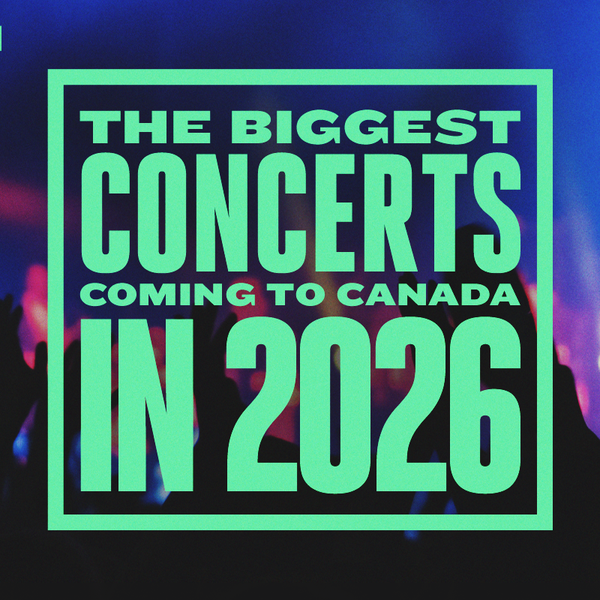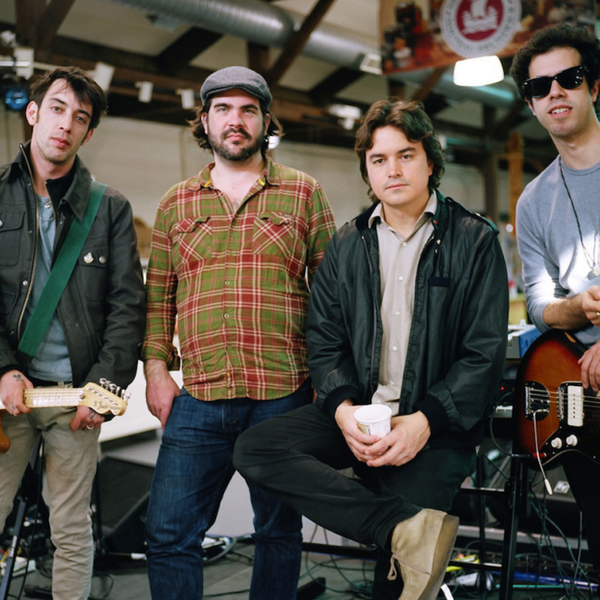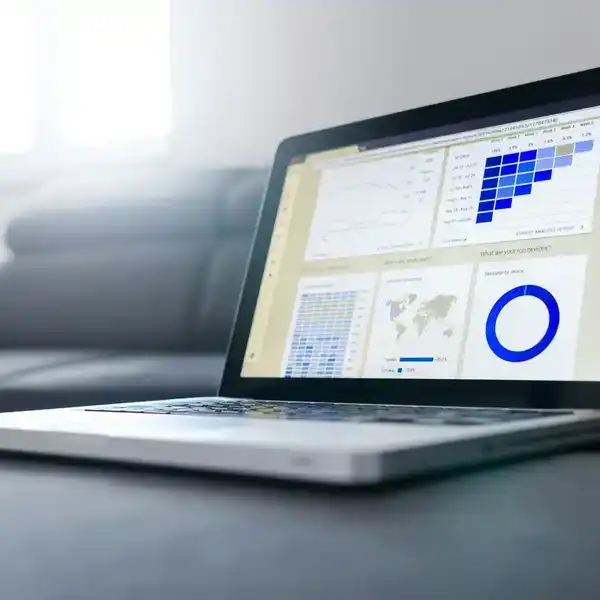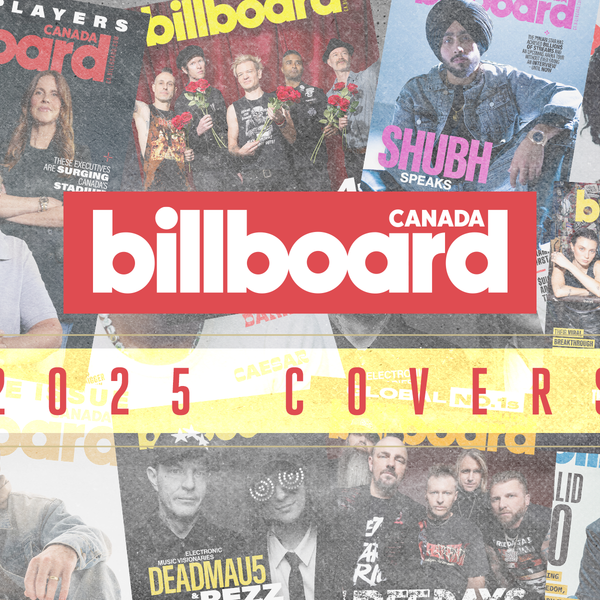Canadian Music Royalty Ecosystem Explained: 2nd Edition
Two years ago, we published Vel Omazic’s immensely helpful article, Canadian Music Royalties Explained, which de-mystified the Canadian music royalty eco-system. Today we publish his updated overview that in great part is the result of lengthy discussions with industry professionals and questions raised by artists since the article first appeared in print. This is one feature that needs to be printed and kept close at hand.

By Vel Omazic
Vel Omazic is the co-founder and executive director of Canada's Music Incubator (CMI) in Toronto, a national not-for-profit and leader in the professional development of independent artists and artist managers across all genres of music.
The CMI team, now five full-time employees, has worked with 700+ artists/managers since 2012 and provided over 7,000 hours of mentorship through 70+ unique program experiences across Canada.
Two years ago, we published Omazic’s article, Canadian Music Royalties Explained, which de-mystified the Canadian music royalty eco-system. “Since then, I’ve been contacted on a regular basis by random artists and industry professionals who’ve read the article and have deeper questions. I’ve also been invited to moderate and speak on the topic at industry conferences and events,” says Omazic.
“Based on all of those conversations, and the evolution of the royalty eco-system itself, the time is right for a “second edition”. You’ll recognize a large portion of this article from two years ago, but we’ve added details and depth based on what artists and managers across Canada want to know.”
Canadian Music Royalty Ecosystem Explained: Second Edition
Music royalties involve a complex bundle of copyrights, uses and rights holders. Realizing a musical creation is made up of two distinct parts is the starting point to understanding the Canadian music royalty eco-system. The first part is the sound recording of a musical work, which is performed by musicians. The second part is the underlying musical work (or song) created by songwriters.
There are four major groups of rights holders involved in the making of recorded music, and they are each entitled to earn royalties for their role in the making of recorded music. In the case of an independent songwriter who performs on and funds her/his own recordings, they control the rights of all four groups.
The first and perhaps most obvious rights holder is the performer. The performer includes recording artists, band members, backup singers and session players who perform on a sound recording of a musical work. The Weeknd is a performer, as is Stephan Moccio who plays piano on “Earned It”.
The second rights holder is the maker. This is the record label, who usually pays for and owns the sound recording. Dine Alone Records is a maker. So too is any independent artist funding and releasing their own recordings.
The third rights holder is the songwriter/composer. The songwriter composed the musical work and or wrote the lyrics if there were any. Amy Foster-Gilles is a songwriter.
The fourth rights holder is the music publisher. These are the people that buy musical works (or catalogues of musical works) from songwriters and who own or co-own the rights to exploit the musical work. Sony ATV is a music publisher. Independent songwriters/composers are considered self-publishers.
Public Performance Royalties
When your music is played or broadcast publicly, you may be entitled to royalties. All businesses that are playing your music commercially (from radio stations to bars, restaurants, nightclubs, and gyms) must pay public performance royalties to Canadian collecting societies, SOCAN and Re:Sound. SOCAN pays songwriters and publishers of musical works and Re:Sound pays performers and makers of sound recordings.
Musical works (songs) are divided into two equal shares (songwriter’s and publisher’s). SOCAN royalties are divided by self-published writers according to the splits mutually agreed upon at the time of creation. When a music publisher is connected to a songwriter, they will generally earn 50% of the publisher’s share, which is equal to 25% of the total musical work (song).
Re:Sound royalties are split 50/50 between “feature performers” and makers (labels). Session musicians, also referred to as “non-featured” performers, are entitled to a portion of the performer’s share.
When you listen to Feist’s cover of Ron Sexsmith’s “Secret Heart” on SirusXM, the satellite broadcaster pays royalties to Re:Sound and SOCAN for the public performance of this song. Re:Sound will pay royalties to Feist (and the musicians that recorded with her) and the record label, Arts & Crafts. SOCAN will pay the songwriter, Ron Sexsmith and the Publisher, Universal Music Publishing Group. In all cases, the responsibility is on right holders to register their works with the appropriate organizations to collect their royalties, which we’ll get to shortly. There’s never a cost to register.
Songwriters and publishers also enjoy a right to public performance royalties when their musical works are played live. For instance, when a cover band plays Justin Bieber’s “Sorry,” in a bar, the songwriters and publisher of the song are entitled to receive public performance royalties.
Songwriters and publishers are also entitled to public performance royalties when TV shows or films that contain their music are played or broadcast publicly. One of the great inequities of the Canadian copyright system is that performers and makers are not entitled to public performance royalties when their sound recordings are used in TV and film. This means that when Celine Dion’s, “My Heart Will Go On”, plays in the film, “Titanic”, neither Celine and the musicians who performed on that recording nor the label that funded it receive a penny of public performance royalties, whereas the songwriter and the publisher do. This costs performers and makers as much as $45 million in lost royalties a year.
This isn’t the only inconsistency found in Canadian copyright when it comes to paying one set of music creators and not the other. Not so fun fact if you’re a performer or maker: annually, commercial radio stations pay full public performance royalties to songwriters and publishers on their first 1.25 million of advertising revenue but not to performers and makers. This works out to around $8 million in lost royalties for performers and makers a year.
If you’re a performer or a maker, you can access your public performance (neighbouring rights) royalties from Re:Sound or one of Re:Sound’s member organizations: ARTISTi, ACTRA RACS and MROC for performers; CONNECT and SOPROQ for makers.
Additional administration fees may be charged if you choose to access your royalties through one of Re:Sound’s member organizations rather than directly through Re:Sound itself. You should get clarity on this when making your choice of where to sign up. To find out if you have uncollected royalties you can visit Re:Sound’s website and type your name into their searchable database.
Reproduction Royalties
A musical creation can be reproduced in many ways: reprints of CDs, copies of sheet music, best of collections and compilations. When your music is physically or digitally reproduced, you may be entitled to reproduction royalties.
Until 2018, a music publisher or a self-published songwriter/composer accessed reproduction royalties via CMRRA or SODRAC.
The CMRRA administers reproduction rights exclusively in Canada.
On July 31, 2018, SOCAN announced the acquisition of Quebec-based SODRAC (the Society for Reproduction Rights of Authors, Composers & Publishers in Canada) and the integration of reproduction rights administration to complement their collection and distribution of performing rights.
Now, SOCAN, thanks to SODRAC’s international reciprocal deals, can help rights holders collect reproduction royalties in Canada and foreign territories, including the USA, UK, France, Japan, Australia and more. So, one registration now means two rights collected, should you also choose to assign your reproduction rights to SOCAN.
There’s also a third option. We are seeing several artists deciding to access the “publishing administration services” of digital service providers like CD Baby Pro, SongTrust and Kobalt, among others, to collect their reproduction royalties.
If you’re a maker of a sound recording, you access your reproduction royalties via CONNECT or SOPROQ.
Private Copying Royalties
While no longer as relevant, when someone burns a CD-R with copies of your music for their personal use you may be entitled to private copying royalties. Private copying royalties are paid for by the manufacturers of CD-Rs or other blank media. If you’re a performer or maker of a sound recording you can access your private copying royalties through the Canadian Private Copying Collective (CPCC) or via Re:Sound or its member organizations (ACTRA RACS, MROC, ARTISTi, CONNECT and SOPROQ).
If you are a songwriter or publisher of a musical work, you can access your private copying royalties via SOCAN or the Canadian Musical Reproduction Rights Agency (CMRRA).
Interesting to note, in many other countries a private copying royalty is also applicable when a listener copies their music library from their computer to their phone or tablet. Here in Canada however, the Private Copying Right is only triggered for private copying onto CD-Rs, which is a much narrower right (and means that private copying royalties in Canada are much lower than in countries, like France for example).
Making Available Right
The Making Available Right gives performers, makers, songwriters, and publishers the right to allow or disallow their music being made available on an interactive platform that gives listeners the power to choose when and where they’ll be listening.
For example, a listener can choose to access an album on Spotify rather than buying a physical album. Spotify has made the album available to the public and this triggers the Making Available Right.
Usually, performers assign their making available right to the record label (makers) in a recording contract. Fully interactive streaming services (Spotify) are licensed by the labels under the Making Available Right, while non-interactive (CBC Music) or semi-interactive (Internet Radio) streaming services are licensed by Re:Sound.
International
For songwriters or music publishers, you can collect your international royalties through SOCAN or directly from each society.
Performers and makers (labels) generating radio airplay outside of Canada may be entitled to international royalties. These are collected through Re:Sound or through the Re:Sound member organization to whom you’ve assigned your rights. However, Re:Sound and each member organization have different international reciprocal agreements. Make sure that international territories important to your business are covered when deciding to work with Re:Sound or any of their member organizations.
This brings us to SoundExchange, which is essentially the Re:Sound of the USA, except unlike in Canada, terrestrial radio in America does not pay this royalty. Re:Sound has a bilateral agreement with SoundExchange (on behalf of all Canadian rights holders assigned directly to Re:Sound or through any of its member organizations), and collected over $9 million for Canadian creators from SoundExchange in 2018.
An often-overlooked fact about SoundExchange is that while they collect royalties for both “featured performers” and “non-featured performers” (session musicians), in order to be paid their share, “non-featured performers” (session musicians) must be registered with the Screen Actors Guild‐American Federation of Television and Radio Artists (SAG-AFTRA).
We can tell you for a fact that we know many Canadian artists who are living a little more comfortably thanks to the SoundExchange royalties they’re earning.
Now, if you love administration, are multi-lingual, and have a ton of free time on your hands, you always have the option to collect directly from each international society yourself.
How Do You Get Your Royalties?
You always want to prioritize your time and energy for making music, but you also need to ensure you’re getting paid for your work.
As a music creator, you have a set of rights protected by the Copyright Act of Canada that entitle you to be paid royalties when your music is used commercially. It’s in your best interest to know and understand these rights, that you sign up with the appropriate collecting societies and that you get in the habit of registering new musical works and recordings. All the organizations mentioned above have great people and helpful websites to guide you through the sign-up and registrations processes. You’d be smart to introduce yourself to them and consider them an extension of your team.
Remember, signing up is important business. No royalties are paid until you do. You need to present identification, sign a contract and you also need to submit a list of your repertoire, otherwise the collecting society can’t know what royalties to pay you.
A great tip for all rights holders, and especially for busy session players, is that you should keep a current and detailed account of your repertoire. It’s your responsibility to track and update your repertoire, just as a business owner would keep inventory. This guarantees you’ll be able to claim all the royalties you’ve earned.
Where to Register
If you’re a songwriter or composer sign up with SOCAN.
If you’re a music publisher or self-published songwriter/composer sign up with the CMRRA for your reproduction royalties or with SOCAN for your public performance and reproduction royalties. The latter if you’re not already registered with the CMRRA or using the “publishing administration services” of a digital service provider.
If you perform on recordings sign up with Re:Sound or with one of Re:Sound’s member organizations, MROC, ACTRA RACS or ARTISTi for your public performance royalties.
If you’re a maker (label or self-released) sign up with Re:Sound or CONNECT or SOPROQ for your public performance royalties and with CONNECT or SOPROQ for your reproduction royalties. Note: You only have to provide your data once to get performance royalties from Re:Sound and reproduction royalties from CONNECT.
Most, but not all, of these organizations are not-for-profits and simply charge their actual costs (which may vary from year to year). Others may charge fixed administration percentages, which do not change. When talking with any of these organizations, you should ask them what their cost structure is, and whether signing with the organization will expose you to more than one level of administrative costs.
Ready, set, register and collect!
vel.omazic@canadasmusicincubator.com

















